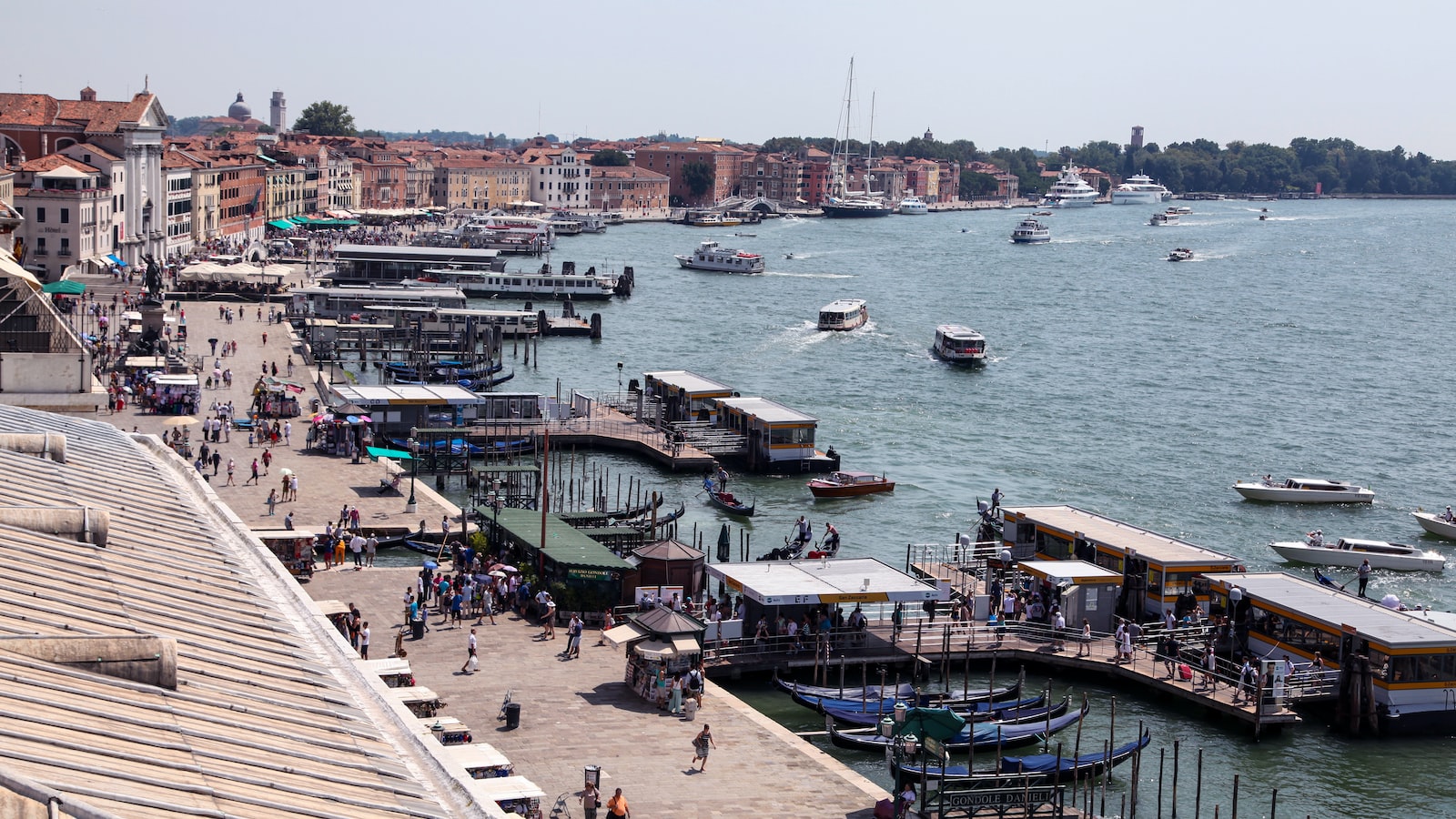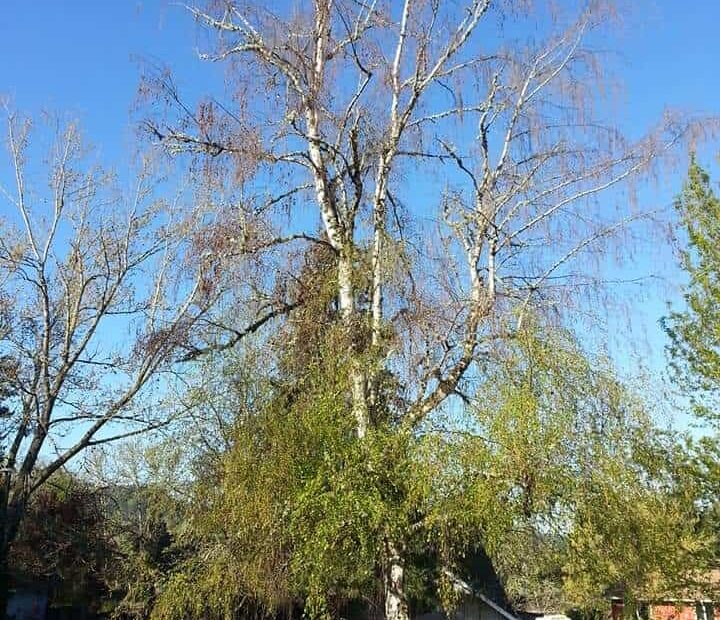In the realm of nature’s grandeur, the lofty birch tree stands tall, its delicate leaves fluttering like jewels in the gentle breeze. This arboreal wonder has long captivated the hearts of poets and artists alike, symbolizing resilience and elegance in the face of adversity. Yet, hidden beneath its magnificent façade, lies a vulnerability that even the mightiest birch cannot escape: the specter of death. Yes, it is a somber truth that these enigmatic beings may fall prey to the grasp of mortality. Today, we embark on a quest to unravel the signs and secrets entwined within the intricate tapestry of a birch tree’s decline. Brace yourself, for this journey will require an attentive eye and an intimate understanding of the subtle nuances that whisper despair. Are you prepared to decode the cryptic language of a birch tree’s ailing soul? Good, then let us delve into the world of dying birches, where whispers of fading life intertwine with the silent march of time.
Recognizing the Signs of a Dying Birch Tree
Birch trees, with their graceful branches and distinctive white bark, add beauty and elegance to any landscape. But just like any living organism, they are susceptible to various health issues that can cause their demise. If you have a birch tree in your yard, it’s essential to understand the signs of a dying tree so that you can take appropriate action to save it or remove it if necessary.
| Signs of a Dying Birch Tree | What to Look For |
|---|---|
 Yellowing Leaves Yellowing Leaves |
When the foliage of your birch tree turns yellow prematurely, it could indicate a problem, such as an inadequate water supply or the presence of diseases or pests. |
 Bare Branches Bare Branches |
If your birch tree fails to produce leaves and remains bare, especially during the growing season, it may be a sign of a severe issue, such as root damage, fungal infection, or insect infestation. |
 Peeling Bark Peeling Bark |
While shedding bark is a natural process for birch trees, excessive peeling or large patches of missing bark can indicate a declining tree, potentially caused by age, disease, or environmental stress. |
If you notice any of these signs in your birch tree, it’s crucial to act promptly. Start by inspecting the tree further for other symptoms, such as cankers, discoloration, or abnormal growths. Additionally, ensure that your tree receives proper care, including regular watering, adequate fertilization, and protection from harsh weather conditions. Should the symptoms persist or worsen, consider consulting with a professional arborist who can provide expert advice on how to save or remove the dying tree.

Understanding the Causes Behind Birch Tree Decline
Birch trees are known for their graceful beauty and unique bark, but unfortunately, they can also be prone to decline and even death. If you have a birch tree on your property and have noticed changes in its health or appearance, it’s important to understand the potential causes behind its decline. By identifying the signs of a dying birch tree early on, you can take the necessary steps to address the issue and potentially save the tree.
One of the most common causes of birch tree decline is a fungal disease known as bronze birch borer. This destructive insect feeds on the inner bark of birch trees, disrupting the flow of water and nutrients throughout the tree. If you notice D-shaped exit holes, thinning of the canopy, or unusual yellowing or wilting of the leaves, your birch tree may be infested with this pest. Other factors that can contribute to birch tree decline include environmental stressors such as drought, excessive heat, or poor soil conditions. Additionally, certain diseases like root rot, bacterial canker, or leaf spot can also weaken the tree’s overall health. To determine the true cause behind your birch tree’s decline, it is recommended to consult with a professional arborist or tree care specialist who can provide a proper diagnosis and recommend appropriate treatment options.
Here are some features to look for and tips to help you determine if your birch tree is dying:
| Features | Tips |
|---|---|
| Thinning canopy | Inspect the tree from a distance to see if the branches appear sparse or if gaps are visible. |
| Yellowing or wilting leaves | Examine the leaves up close to see if they are turning yellow prematurely or appear withered and droopy. |
| D-shaped exit holes | Inspect the trunk and branches for small, oval-shaped holes that may indicate a bronze birch borer infestation. |
Remember, a birch tree in decline may still have a chance to recover if the issue is addressed promptly. It’s important to seek professional advice and take appropriate measures to potentially save these iconic trees that bring so much beauty to our landscape.
Taking Action: Tips for Saving a Dying Birch Tree
Signs to Identify if a Birch Tree is Dying
As majestic as birch trees are, it’s disheartening to witness their health decline. But fear not! By being able to recognize the telltale signs of a dying birch tree, you can take action and potentially revive its vigor. Here are some key indicators to look out for:
- Discolored or Wilting Leaves: If you notice the leaves on your birch tree turning yellow or brown, withering, or dropping prematurely, it could be an indication of distress.
- Thinning Canopy: A once lush and vibrant canopy that starts becoming sparse or thin is a sign that your birch tree might not be in the best shape.
- Bark Damage: Examine the trunk and branches for peeling bark, cracks, or lesions. In severe cases, this bark damage can lead to the death of the tree.
- Unusual Growth: Keep an eye out for abnormal growth patterns, such as excessive suckers, dead branches, or unusually shaped leaves. These are often signs of underlying issues.
| Tips to Save a Dying Birch Tree | Features |
|---|---|
| Prune Dead or Diseased Branches | – Removing infected parts can promote new growth and prevent further damage. |
| Provide Adequate Watering | – Birch trees have shallow roots and may require extra watering during dry periods. |
| Fertilize Regularly | – Using a balanced fertilizer can supply necessary nutrients and boost tree health. |
Remember, early intervention is crucial when it comes to saving a dying birch tree. If you notice any of the aforementioned signs, it’s vital to act promptly and seek professional guidance if necessary. With proper care and attention, you may be able to revive your beloved birch tree back to its former glory.

Seeking Professional Help: When to Consult an Arborist
When it comes to the health and well-being of your birch tree, it’s always better to be safe than sorry. But how can you tell if your beloved birch tree is on the brink of dying? Here are some signs to keep an eye on:
| Features | Tips |
|---|---|
| Bare Branches: | If your birch tree shows no signs of leaf growth even during the appropriate season, it might indicate a dying tree. |
| Discolored Leaves: | If the leaves of your birch tree turn yellow, brown, or exhibit unusual spots or blotches, it could be a sign of a health issue. |
| Drooping or Falling Limbs: | If the branches of your birch tree are sagging, breaking, or falling off, it indicates weakness or decay within the tree. |
While these signs may point towards a dying birch tree, it is crucial to seek professional help from an arborist to accurately diagnose the problem and provide appropriate solutions. Arborists are trained professionals who specialize in tree care and can assess the health of your birch tree with expertise. Remember, early intervention can often save a dying tree, so don’t hesitate to consult an arborist if you suspect trouble.
Frequently Asked Questions
Q: How can I tell if my birch tree is on the brink of dying?
A: Aiding you in your quest for leafy truth, here are three signs that suggest a birch tree may be gasping for its last breath.
Q: Is an uninspiring crown a sign of a dying birch tree?
A: Sadly, a majestic birch tree with a scanty crown may well be waving you a sorrowful goodbye. When its leafy crown grows sparse, yellow or brittle, it’s an undeniable red flag.
Q: Should I be concerned if my birch tree is shedding bark like there’s no tomorrow?
A: Indeed, bark shedding like a snake’s skin is a distress signal from your birch tree that it may be in dire straits. Keep an eye out, for peeling bark is a telltale sign of decay and underlying health issues.
Q: Can a dying birch tree exhibit any unmistakable changes in its branches?
A: Absolutely. A birch tree on its deathbed may reveal its true colors through its branches. If they appear brittle, fragile, or exhibit an alarming lack of new growth, it’s a clear indication of a tree in distress.
Q: What should I make of a birch tree that no longer possesses its vibrant autumnal glow?
A: Alas, the loss of vibrant autumn foliage from a birch tree could be an ominous omen. If its leaves no longer boast their iconic golden hue, and instead appear dull or lifeless, it may be time to sound the alarm bells.
Q: Can a dying birch tree display any disconcerting signs underground?
A: Definitely! Even beneath the surface, a birch tree struggling for survival will offer insight into its impending demise. Protruding, decaying roots or a lack of new root growth suggest the tree is staring into the abyss.
Q: Is a birch tree’s inability to withstand strong winds a cause for concern?
A: While birch trees naturally have a gentle sway in the breeze, excessive swaying or snapping branches during storms may indicate that your beloved tree is waving a final farewell.
Q: Do dying birch trees emit any obvious physiological distress signals?
A: Though not always apparent, physiological changes can be a lifeline in recognizing a dying birch tree. Weeping or oozing sap, an offensive odor, or the presence of pests, like wood-boring insects, all point towards a severe health setback.
Q: What if my birch tree fails to leaf out during springtime?
A: Ah, a bud-less spring can be a disappointing harbinger of bad news. If your birch tree forsakes its annual foliage debut, it’s time to explore further. The absence of new leaves could signify an irreversible decline and the end of its natural course.
Q: Can a struggling birch tree regain its vitality with proper care and nurturing?
A: Absolutely! Although it may seem dire, there’s hope yet. With attentive pruning, soil revitalization, proper watering, and pest management, a birch tree on the edge of oblivion may find strength in your loving care. As we bid farewell to our journey of unraveling the secrets held within the enigmatic world of birch trees, we hope that you’re now equipped with the knowledge to discern their silent cries for help. Remember, the lifeblood of a birch tree flows through its majestic branches, echoing the whispers of the forest and connecting us to nature’s symphony.
In a world where time is fleeting and landscapes ever-changing, identifying the signs of a birch tree’s decline is a gentle reminder of both the fragility and resilience of life. From the subtle shifts in foliage color to the somber shedding of bark, each clue unraveled ignites a deeper connection with our leafy companions.
Though the inevitable fate of a dying birch tree may be difficult to bear, understanding the reasons behind its departure from this world allows us to appreciate the fleeting beauty it bestowed upon the horizon. And amidst the sorrow, new life emerges from its roots, reaffirming the eternal cycle of birth, growth, and transcendence.
So, dear wanderer of the woodland realms, let us tread lightly upon the forest floor, cherishing every encounter with these silent guardians. May the stories of the birch trees forever linger in our souls, a tribute to their ethereal allure and the wisdom they share with those who listen.
As the sun sets upon this bittersweet tale, we bid adieu to our beloved birch trees, knowing that their legacy lives on in the whispers of the wind, the dappled hues of autumn, and the dreams of those who still seek solace beneath their sheltering branches. In their fragile existence, they remind us of the transient beauty that graces our world, reminding us to cherish every precious moment, for even the mightiest of trees can eventually yield to nature’s embrace.
- When to Put Weed and Feed on Lawn in Michigan - October 16, 2023
- When to Fertilize Potatoes Plants - October 16, 2023
- Can You Plant Clover in the Spring - October 16, 2023

